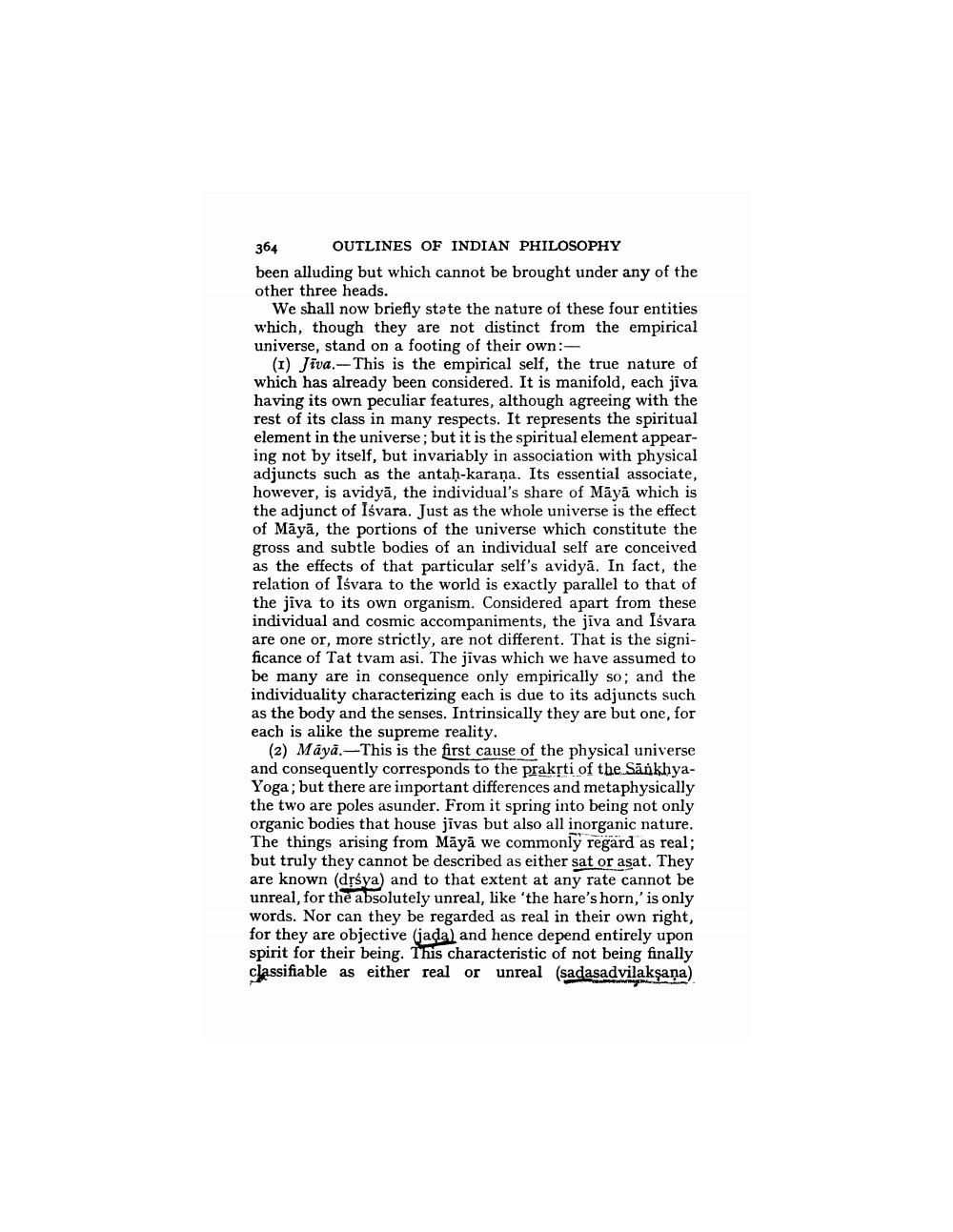________________
364 OUTLINES OF INDIAN PHILOSOPHY been alluding but which cannot be brought under any of the other three heads.
We shall now briefly state the nature of these four entities which, though they are not distinct from the empirical universe, stand on a footing of their own:
(1) Jiva.---This is the empirical self, the true nature of which has already been considered. It is manifold, each jiva having its own peculiar features, although agreeing with the rest of its class in many respects. It represents the spiritual element in the universe; but it is the spiritual element appearing not by itself, but invariably in association with physical adjuncts such as the antah-karaņa. Its essential associate, however, is avidyā, the individual's share of May, which is the adjunct of Isvara. Just as the whole universe is the effect of Māyā, the portions of the universe which constitute the gross and subtle bodies of an individual self are conceived as the effects of that particular self's avidyā. In fact, the relation of Isvara to the world is exactly parallel to that of the jiva to its own organism. Considered apart from these individual and cosmic accompaniments, the jiva and Isvara are one or more strictly, are not different. That is the significance of Tat tvam asi. The jivas which we have assumed to be many are in consequence only empirically so; and the individuality characterizing each is due to its adjuncts such as the body and the senses. Intrinsically they are but one, for each is alike the supreme reality.
(2) Mayā.-This is the first cause of the physical universe and consequently corresponds to the praksti of the SankhyaYoga; but there are important differences and metaphysically the two are poles asunder. From it spring into being not only organic bodies that house jivas but also all inorganic nature. The things arising from Māyā we commonly regard as real; but truly they cannot be described as either sat or asat. They are known (drsya) and to that extent at any rate cannot be unreal, for the absolutely unreal, like 'the hare's horn,' is only words. Nor can they be regarded as real in their own right, for they are objective (jada) and hence depend entirely upon spirit for their being. This characteristic of not being finally classifiable as either real or unreal (sadasadvilaksana)




